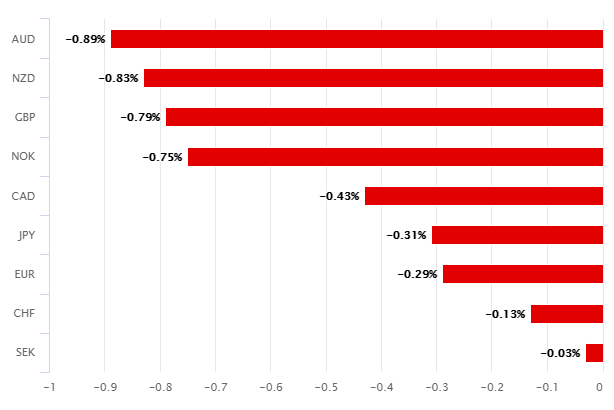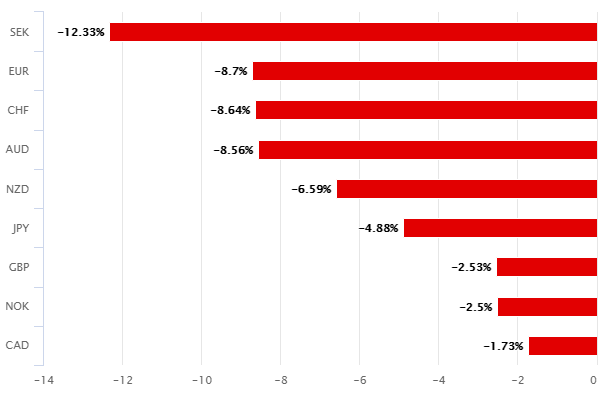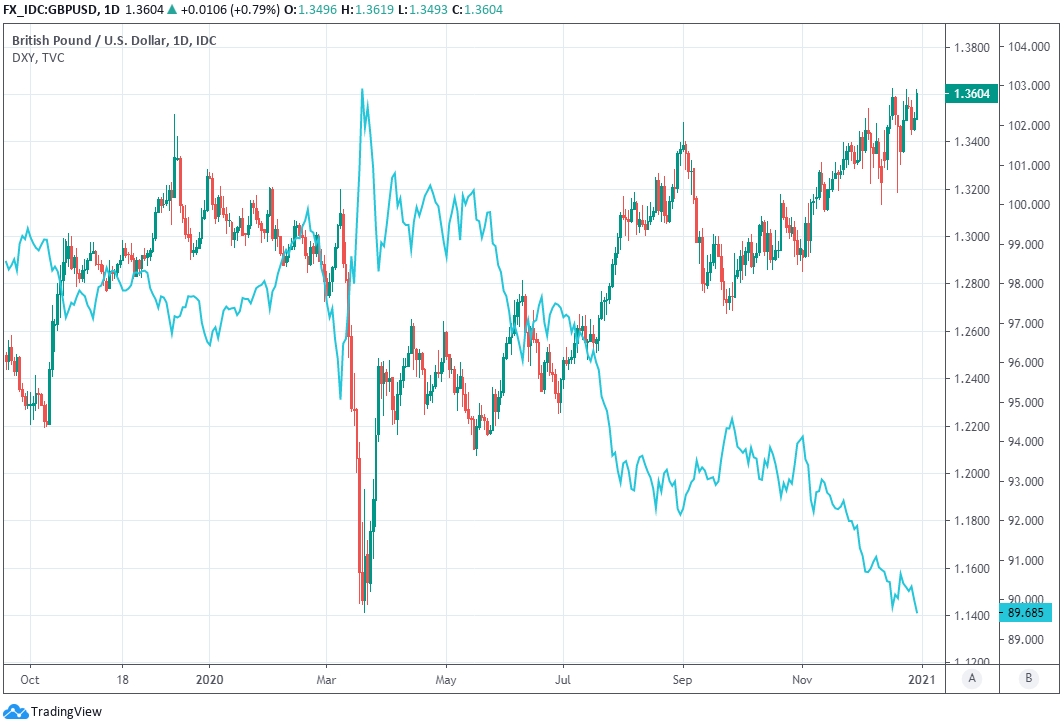U.S. Dollar Weeps as Other Currencies Undeterred by Creeping Spread of Virus Restrictions
- Written by: James Skinner
-

Image © Adobe Images
- GBP/USD spot rate at time of writing: 1.3606
- Bank transfer rate (indicative guide): 1.3222-1.3317
- FX specialist providers (indicative guide): 1.3394-1.3503
- More information on FX specialist rates here
The U.S. Dollar was down for the count against all major and many emerging market currencies on Wednesday as a creeping spread of tightening coronavirus-related restrictions in the UK and elsewhere appeared to go overlooked by foreign exchange markets ahead of year-end.
U.S. Dollars were sold widely but most resoundingly against other major currencies on Wednesday and even after some European stock markets slipped into the red for the session, with the market appearing unfazed by the announcement of further curbs on activity in the UK.
"The USD is posting another broad-based decline today as year -end nears with low-volume markets trading in a slight risk-on mood—with no obvious driver aside from a continuation of the vaccine-led boost to optimism and year-end positioning," says Shaun Osborne, chief FX strategist at Scotiabank.

Above: U.S. Dollar performance against major rivals on Wednesday. Source: Pound Sterling Live.
Health secretary Matt Hanckock said in parliament Wednesday that the remaining parts of the South East as well as large parts of the Midlands, the North West, the North East and the South West of England will all be placed into the highest tier of restrictions, joining much of the rest of the country.
With more than 21,000 people already receiving hospital care as a result of the virus, a day after some 53,135 new infections were reported and as the new, more infectious strain of the disease spreads across the country, Hancock says the measures are necessary to stave off risks to the health service. Tier 4 restrictions effectively mark a return to 'lockdown' for areas subjected them, with all supposedly non-essential businesses closed and individuals allowed to leave the home only under certain circumstances,
In addition, secondary/high school students will no longer return after the Christmas holidays as had been planned while there were also doubts about whether the youngest school age children would return too. The announcements came on the same day the government granted approval to the vaccine produced by Aztrazeneca and Oxford University, as well as alongside a House of Commons vote to approve last week's UK-EU trade agreement.
Above: Pound-to-Dollar rate shown at daily intervals alongside U.S. Dollar Index (blue).
Fears for hospital capacity were also cited in California Tuesday for the prolongation of stay-at-home orders, although the state is not the only one to have reimposed such measures of late, while attention had turned by Wednesday to Colorado where a first case of the UK's mutated strain was detected in an individual who had no recent international travel history.
None of this deterred Sterling from its advance on the Dollar nor kept investors from dumping the greenback.
"There’s some sense of “UK optimism” in the air following news that Britain has approved the AstraZeneca/Oxford COVID-19 vaccine, and following headlines that MPs are getting set to approve the EU-UK trade deal today, but the tepid reactions we’re seeing in the FTSE 100 and the S&P 500 futures suggests that the USD selling is more a function of flows/stop orders getting tripped in an illiquid market, more than anything else," says Eric Bregar, head of FX strategy at Exchange Bank of Canada.
Investors have overlooked short-term risks of late, preferring instead to position themselves for a global recovery next year, and even more so since vaccines began to be rolled in Europe, the U.S. and elsewhere. Wednesday's price action effectively confirms what are set to be high single digit losses for the Dollar against all but a few large counterparts.

Above: U.S. Dollar performance against major rivals in 2020. Source: Pound Sterling Live.
The Dollar was on course to end the year sat on a -12% decline against the Swedish Krona and also having fallen by more than -8% against the Euro, Swiss Franc and Australian Dollar. The greenback's best performance has been against the Canadian Dollar and Pound although even here, it's fallen -1.74% and -2.4% respectively.
Federal Reserve interest rate cuts have stripped away the Dollar's earlier yield advantage this year while the pandemic has levelled the economic field ahead of a global recovery that's expected to favour commidity-linked currencies over low yielding safe-havens like the greenback and Japanese Yen.
"We're at the point when book-keeping and position-management have a much bigger impact on markets than sentiment," says Kit Juckes, chief FX strategist at Societe Generale. "The newsflow is all about US stimulus, the Covid crisis, and vaccine deployment. I remain firmly of the view that vaccines are the 2021 game-changer, and most markets ought to be able to look through the pandemic from here onwards, albeit with underlying nervousness about vaccine efficacy until proven otherwise. Unless/until we question the Fed's rate promises, it's only over-exuberance that's really likely to trigger risk aversion, and days of sharp dollar strength."






